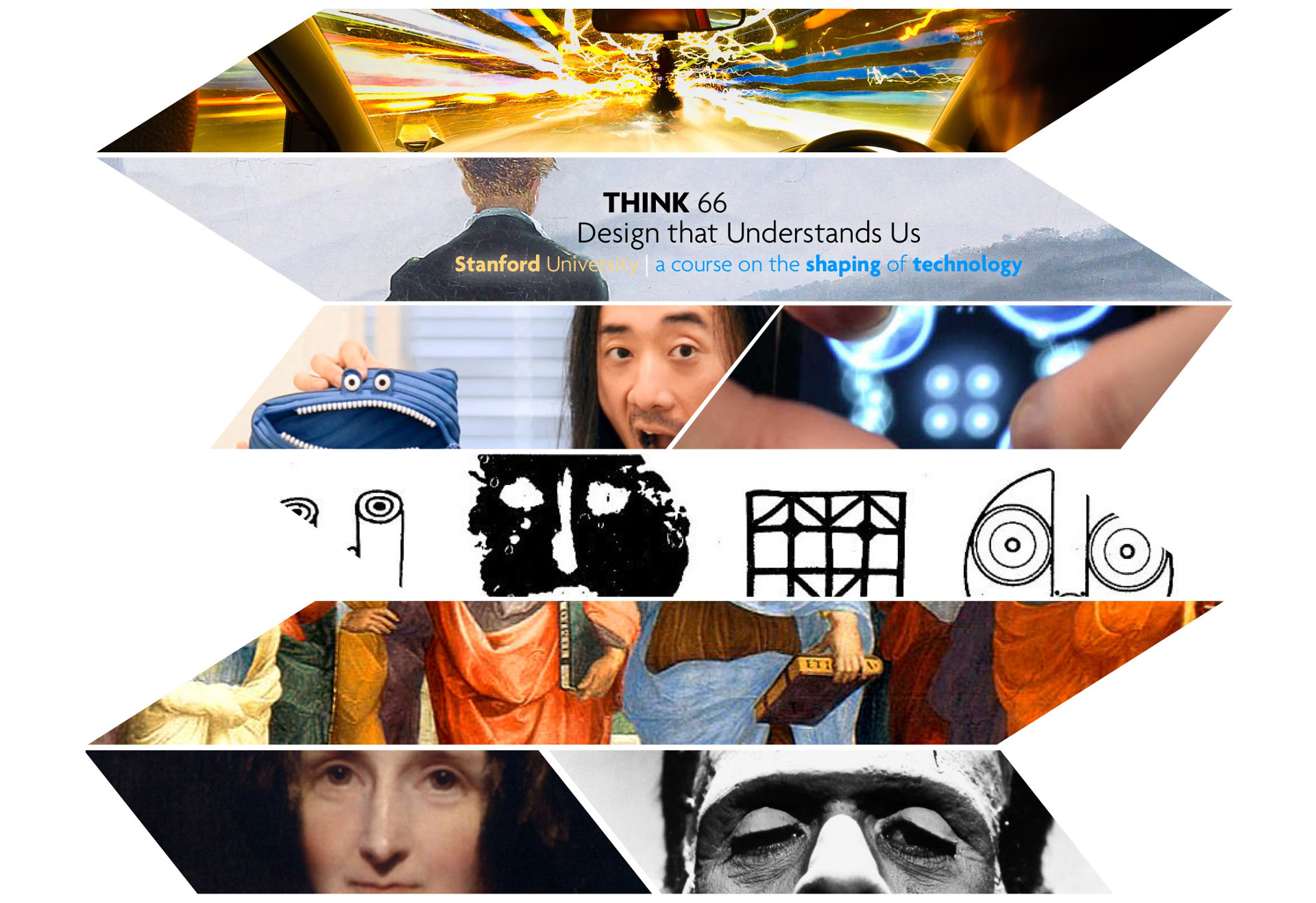
THINK66 • Design that Understands Us
T+Th 10:30-11:20am
course syllabus (pdf)
Faculty
Center for Computer Research in Music and Acoustics (CCRMA) Department of Music (also Computer Science, by Courtesy) Office: Knoll 212 | Office Hours: by appt. ge@ccrma.stanford.edu Teaching Fellows Dr. Justin Clardy clardyj@stanford.edu Office: Sweet Hall 218C | Office hours: by appt. Dr. Emily O’Rourke eorourk@stanford.edu Office: Sweet Hall 218C | Office hours: by appt. Dr. Sean Hallowell hallowell@stanford.edu Office: Sweet Hall 217B | Office hours: by appt. |
Course Description
What we make, in turn, makes us. We find ourselves in an age of rapidly evolving technology, where the world we inhabit, increasingly, is the world we make. This course examines the nature, purpose, and meaning of design in human life, and asks the fundamental questions of what design is, why do we do it, and the ways in which the shaping of technology can speak to who we are as humans. Students in this course will learn about different aesthetic frameworks and the fundamental language of design so that you can begin analyzing everyday examples in media, art, games, and tools. You will learn ways to think critically about the design of social networks, artificial intelligence, machine learning, robots, virtual reality—in terms of needs and values, usefulness and aesthetics. Design that Understands Us is a meditation on technology, art, society, and on design— not only what it does for us, but also what it does to us.
Questions
- What is the nature of design—and the meaning it holds in human life?
- What does it mean to design well?
- What does it mean to design ethically, to imbue conscience into technology?
- Why do/should we design beauty into useful things?
- How can (and should) the shaping of technology reflect human values?
Course Goals
- Develop a language for thinking about design in the context of everyday life.
- Investigate the craft of design, from perspectives of both the designer and user.
- Understand ways in which design affect us beyond its established functionality, and explore the aesthetic dimensions of design, from the sensorial, the emotional, the social, to design’s implications on our ways of life.
- Put theory into practice in creative "design etudes" throughout the course.
- Critically engage with design as an art of shaping technology, and to develop frameworks for thinking about its implications on the individual and society.
Primary Texts
Adapted from the book Artful Design, Design that Understands Us draws from engineering, philosophy, art, and social sciences to examine how we shape technology, and how technology shapes us in turn. Below are some primary texts for the course. For a full list of resources, check out course readings.

- Aristotle, Nicomachean Ethics, 350 B.C.E.
- Mary Shelley, Frankenstein: Or, The Modern Prometheus. 1818.
- Bruno Munari, Design as Art. Penguin Global, 1966.
- Don Norman, The Design of Everyday Things. Basic Books, 1988.
- Ge Wang, Artful Design: Technology in Search of the Sublime. Stanford University Press, 2018.
Ways of Thinking / Ways of Doing
Design that Understands Us fulfills the following Ways of Thinking / Ways of Doing breadth requirements.
- Aesthetics and Interpretive Inquiry (AII)
- Creative Expressive (CE)
Course Material
Below are links to the course materials.
- course syllabus — full syllabus
- schedule — week-by-week course schedule
- readings + more — texts + resources
- projects — course work + student projects